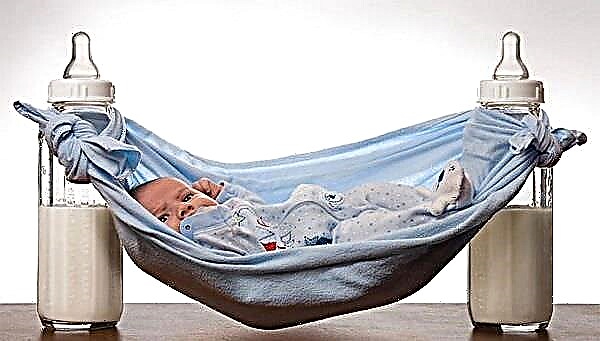
Splinters on children's arms and legs are not at all uncommon, because little researchers always try to touch and study everything on their own. Going to the doctor with a splinter is not a good idea for most parents. Moreover, there are many ways to quickly get a splinter from a baby as painlessly as possible on your own. We will talk about them in this article.


A few facts about splinters
A splinter is a sharp foreign body that penetrates under the top layer of the skin. This usually occurs during outdoor play and playing with wood or glass or metal.
Often, splinters penetrate the baby's skin while playing in the sandbox or in the country, in nature.
The foreign body can be very small, the child will not even feel it. It is these tiny splinters that usually come out on their own, the body knows how to reject them quite quickly and painlessly. But if the splinter is noticeable, it gives the baby pain or discomfort, if it has entered deeply, then it is necessary to pull out the “uninvited guest” as soon as possible in order to avoid inflammation, suppuration, and the addition of a bacterial infection.


General recommendations
All manipulations with the damaged area should be carried out exclusively with clean hands previously washed with soap. Wash and, if possible, pour boiling water over all the "tools" that are planned to be used during the manipulations. If it is not possible to treat with boiling water, you should wipe the items with an antiseptic.
First of all, you should evaluate your strengths and the degree of the problem. If the splinter has gone too deep, and redness and swelling have formed over it, you should not try to cope with it yourself. It is better to go to the nearest emergency room.


If a splinter has entered where there is an accumulation of nerve endings, then anesthesia cannot be avoided. Therefore, it is also advisable to remove a foreign body from under the nail in a medical institution. If the child "acquired" a splinter a few days ago, but the fact of its presence has become known only now, when the affected area is sick, inflamed and festering, you will have to use some pharmacy drugs with anti-inflammatory and antimicrobial effects.
It is advisable to start any method after the child has been given a steaming bath, this is especially important if a foreign body is stuck in a place that is hard to reach for tools - under the nails and in the heel.
The bath will require warm water, baby soap, and some baking soda. Duration of steaming is about 10-15 minutes.


Effective ways
Thin needle
This is a traditional method, familiar to everyone from childhood, for which a sharp, thin needle is used. Do not use sewing needles for manipulation. It is better to use a needle from a disposable sterile syringe. Antiseptic (alcohol or "Miramistin") you need to treat your hands, a needle, tweezers and the injured part of the skin.
The needle is gently prying the skin directly perpendicularly over the splinter, introducing it horizontally under the uppermost layer of the epidermis, and slightly tear it, then cling to the appeared tip with tweezers and take it out as carefully as possible, without squeezing so as not to break it. Then the injured finger or palm is treated with an antiseptic again. For several days, it is worth carefully observing the extraction site so as not to miss signs of possible infection.
Inflammation, redness, swelling, the appearance of pus - all these are signs that it is time to apply an antibiotic ointment (for example, "Levomekol") or go to see a doctor.
This method has several big drawbacks. First, a sterile needle and antiseptics are not always at hand. Secondly, not every child voluntarily agrees to be poked with a needle in his finger. If a one-year-old child can still be somehow supported with the help of other family members, then for an older child it is best to choose an alternative method, without using a needle.
Scotch
A great way for a small child who "collected" several small splinters at once, for example, when falling. The affected area should be treated with an antiseptic, trying not to press on the places where foreign bodies enter the skin, so as not to drive them deeper. The skin must be allowed to dry, after which stick on the affected area a piece of wide tape.
With a sharp movement, peel off the tape. The lion's share of small splinters will remain on it. The procedure must be repeated until all small splinters are removed.


The method is definitely not suitable for a deep splinter, as well as for babies up to a year old, since their skin is very vulnerable, and manipulation with scotch tape will cause the baby more suffering than the splinters themselves.
Also, this method cannot be used if there are areas with abrasions around small splinters, this will cause pain and increase the risk of infection of the wounds.
Baking soda
A deep splinter in a hard-to-reach place such as the heel or the center of the palm that cannot be reached with a needle or other means can be attempted extract with regular baking soda, which every housewife has in the kitchen. For a tablespoon of soda, take about half a teaspoon of warm water, make a soda gruel and apply to the site of the splinter. A cotton pad or a piece of gauze is placed on top and carefully fixed with a plaster.
After one and a half to two hours, the skin under the garter will swell greatly. A splinter, with a slight pressure on the sides, in most cases comes out easily by itself.
If it does not come out, then it will be very easy to get it out of the softened skin with a sterile needle. Manipulation is not painful if done correctly.


Cons of this method consist in the fact that soda, which is quite aggressive in nature, on the delicate skin of a baby can cause an allergic reaction, and the likelihood of removing a deep splinter is not one hundred percent.
Iodine
A school-age child and teenager can have a deep splinter removed with iodine... To do this, an antiseptic applied to a cotton swab is moistened with a wound every three to four hours. If the splinter is wooden, then it will "burn" as a result and come out.
The method raises great doubts, and is definitely not suitable for use in children under 12 years of age.
The child's body is too quickly able to accumulate iodine coming from outside; in a baby, this method of extracting a banal splinter can cause more serious consequences than inflammation and wound suppuration, for example, an overdose of iodine. And this is already a uniform sadism and barbarism.


PVA glue
Parents of babies will definitely like this method, since it does not have such a strong traumatic effect as all of the above. In order to remove a splinter from under the skin on the arm, leg of a small child, you need to apply a little to the damaged skin PVA glue.
When the glue dries, carefully remove it. Often the splinter comes out with it, because its tip is firmly glued. The disadvantage of this method - the likelihood of a splinter breaking off when only a part of it that was located closer to the skin surface comes out.
A definite plus - psychological comfort of the baby, since no one will force him to walk with a bandage for several hours and poke needles into the injured place.


Ichthyol ointment
If the question arises of how to remove a splinter from a child's finger without using any traumatic devices, then you can consider such a well-known drug as ichthyol ointment... It is applied to the damaged area, a cotton pad is applied on top, a bandage, if necessary, fixed with a plaster. After 10 hours, the bandage is removed, the splinter will most likely come out when removed.
Cons of the method consist in the unpleasant smell of the ointment itself, the child will definitely not like it. In addition, children do not like fixed bandages, especially for such a long time.
It is also important to follow all safety measures regarding this drug. Do not apply it to the skin of a child under 6 years old.


Despite the fact that many parents claim that they used ichthyol ointment for one-year-old babies, manufacturers indicate that such experiments can be dangerous. "Ichthyolka" can not be licked, there is. Make sure that the child cannot access the contents under the bandage.
Salty water
A "fresh" splinter that the child received no more than an hour ago can be removed with salt water... Dissolve table salt in a glass (2.5-3 tablespoons of salt for 250 ml of water). The water should be hot, but not so hot that a child's finger cannot be in it.
A leg or arm (depending on the place of injury) is lowered into salt water, held for about 15 minutes. Then the splinter will easily come out with a slight slight side pressure, like on a pimple. Significant disadvantage the method lies in the fact that it will be quite difficult to keep a restless child by a glass of salt water for more than 3 minutes, and the time interval here is of decisive importance.


Birch Tar / Banana Peel
This is a method based on the imposition of compresses. The "push-out" properties are banana peel and Birch tar... With these components one by one or combining them together, you need to apply a compress on the damaged injured skin at the site of the splinter entry. The compress is covered with cling film, tied with a bandage and left overnight.
In the morning, the foreign body is usually at the very top, at the entry point and the splinter can be easily removed with tweezers. Convenience of the way is that both bananas and tar are readily available ingredients. Minus - the fact that traditional medicine is not yet able to clearly explain the "pulling away" effect of banana peels. Therefore, this method is considered more popular, which means that there are no guarantees that it will help the next morning.


Aloe
This method is loved by many generations of mothers, whose fidget children often "earn" splinters of all sizes and depths of penetration. To extract you only need a few aloe leaves... This plant is found on the windowsill of almost every apartment.
A freshly cut aloe leaf is cut lengthwise into strips and tied to the site of the splinter. It is enough to hold the plant, which is famous for its healing juice, in the injured place for about 4-5 hours, and a splinter appears on the surface. After that, it can be easily removed with tweezers.
Plus way lies in the fact that aloe additionally disinfects and moisturizes the affected area, prevents the growth of pathogenic bacteria. Disadvantage - all the same. It is necessary to make sure that the child does not remove the bandage with the aloe leaf during these several hours, and this can be very, very difficult.


Lard + hydrogen peroxide
This method requires unsalted bacon and hydrogen peroxide. First, a piece of bacon is applied to the site of injury, carefully securing it with a bandage. After 2-3 hours, the bandage is removed and the place of penetration of a foreign particle under the skin is poured with hydrogen peroxide. Together with the "hiss", a splinter will come to the surface.
The process is completely painless, the child can feel only a slight tingling sensation at the time of the action of hydrogen peroxide.


Little tricks
Here are some cunning tricks sometimes resorted to:
- Parents of babies know how difficult it is to remove a splinter from such young children. They do not agree to wait, remove the imposed bandages, resist manipulation with tweezers. To remove a splinter for a baby, you need to do everything at the moment when the baby is sleeping. It is optimal to use an anesthetic spray, and choose the traditional method with a needle, so as not to hold the child with a bandage, or give preference to another method that does not take much time. You need to remove the splinter until the baby wakes up.
- A dark line on the nail plate does not always mean that the child has a splinter under the nail. Sometimes the appearance of such stripes indicates the development of a fungal infection. This condition requires a very different treatment.
- The most easily removed by the above methods splinters from plants - thorns from cacti, roses, bushes and wooden splinters - shavings, sawdust, pieces of wood. It is more difficult to remove metal and glass splinters. In some cases, such foreign bodies require the use of a medical instrument.
- The first aid kit should always be kept a small set of tools that may come in handy, if the child comes from a walk with a splinter. These are antiseptics - iodine, alcohol, formic alcohol, hydrogen peroxide, Miramistin. Ointments - ichthyol and Vishnevsky's balm, as well as an ointment with the antibiotic "Levomekol". Related products - tweezers, disposable syringe, plaster, bandage, cotton pads.


Dr. Komarovsky talks about how to remove the splinter in the next video.



